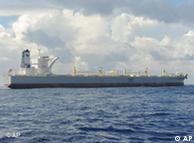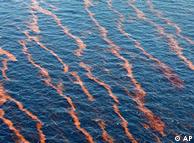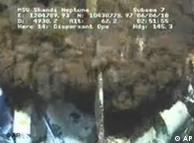ENVIRONMENT | 12.07.2010
BP claims 'significant progress' in battle to cap oil well
"We have made significant progress. This could lead to the shutting of the well," Admiral Thad Allen, head of the US government response effort, told the NBC television network on Monday.
He was referring to the latest attempt to halt the massive oil slick in the Gulf of Mexico - which is still spewing vast amounts of crude into the ocean every day - by using underwater robots to install a new cap over the ruptured well.
"We'll be in a position later today to put the containment cap over the well, and this containment cap will have the ability to actually close down valves and slowly contain all the oil," Allen said in another interview with news network CNN.
He said that once that has happened, it will be possible to see how much pressure is in the well.
 Admiral Thad Allen, head of response effort, says progress is at hand
Admiral Thad Allen, head of response effort, says progress is at hand
"That could lead to one or two positive outcomes," he continued. "It could tell us that the well is withholding the pressure and we can shut it or just cap it, if you will. Either way those are two pretty good outcomes."
The latest attempt to contain the spill comes months after the Deepwater Horizon explosion that triggered the worst environmental disaster in American history.
Thus far response efforts have been patchy, with energy giant BP managing little more than a partial mop-up.
The US government estimates that some 60,000 barrels of oil are flowing out of the ruptured pipe every day. Of that, less than half is currently being captured. By July 10, only 749,000 barrels had been collected or burned off by containment systems.
'Planned and practised'
The latest operation entails the removal of the ineffective existing cap and its replacement with something called a transition spool. Once that has been bolted onto the pipe, a huge oil-collecting funnel, dubbed the "Top Hat 10" can be put in place to start capturing oil.
 Damage done off the coast of Louisiana
Damage done off the coast of Louisiana
Kent Wells, BP's Vice President, told reporters he was optimistic they'd got it right this time.
"We are pleased with our progress," he said. "We have carefully planned and practised this whole procedure. We've tried to work out as many of the bugs as we can."
In addition to the new system, which should give the first reliable indication of the overall flow, a new containment ship has been deployed to the area. BP is confident that the combination of the two will stop the previously unstoppable.
The vessel, called the Helix Producer, was originally due to be on its way by Sunday, but was delayed until Monday for technical reasons.
Temporary measure
In conjunction with the new cap, the Helix Producer ought to raise capture capacity from a current 25,000 barrels a day to as much as 80,000 barrels a day.
 Even the supertankers have not cleared up as much as necessary
Even the supertankers have not cleared up as much as necessary
White House spokesman Robert Gibbs told NBC that efforts to stem the flow of crude had reached a critical stage.
"The new containment procedure will more than triple our capacity," he said.
But even if it does prove successful, it is still only a temporary measure. A long-term solution is not expected until the middle of August, when drilling of the first of two relief wells is expected to be finished.
That work was suspended on Saturday in order for the robots to remove the old cap, but in a statement released on Saturday, BP said the time frame was realistic.
"Although uncertainty still exists, the first half of August remains the current estimate of the most likely date by which the first relief well will be completed and kill operations performed," BP said.
Picking up the tab
BP says that while it is too early to put a number on the overall cost of the disaster, it has so far cost the cash-rich company a massive 2.78 billion euros ($3.5 billion). That includes the cost of containment, relief well drilling, grants to the Gulf states, federal costs and claims paid.
 Livelihoods have been crushed by the oil contamination
Livelihoods have been crushed by the oil contamination
On Saturday the British energy giant said it had received 105,000 claims and had made more than 52,000 payments thus far. But with so much still outstanding, speculation about BP's next move is rife.
British and US newspapers reported on Monday that the beleaguered oil company was in talks to sell 9.5 billion euros of assets in order to create a more substantial disaster fund.
There is also much talk about BP becoming the target of a hostile takeover bid from US rival, Exxon. Neither company has commented on the reports, but the mere possibility helped push share prices up by 6 percent in London on Monday.
Author: Tamsin Walker (AFP/dpa)
Editor: Nathan Witkop


No comments:
Post a Comment